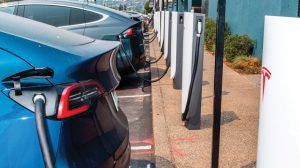BLOOMBERG
A year and a half ago, China’s CATL put on a flashy event to make an announcement significant enough that Zeng Yuqun, the founder and chairman of the world’s biggest battery maker, served as emcee.
Zeng, who had just passed up Alibaba’s Jack Ma in the Bloomberg Billionaires Index, revealed that CATL was working on battery packs that would use lithium-ion and sodium-ion cells. While sodium is more abundant and offers potential safety benefits over lithium, the latter is dominant in EV batteries. Lithium-ion chemistries offer superior energy density, enabling drivers to travel further between charges.
While CATL laid out steps it was taking towards commercialisation, the massive supplier to automakers including Tesla, Geely and BMW has been beaten to the punch — at least to the prototype stage. Chinese automaker JAC unveiled a test version of its Sehol E10X electric car that was packing sodium-ion cells.
Supplying the cells was HiNa Battery Technologies, a small and relatively new player to China’s battery scene, having been founded in 2017 following years of work at a scientific research institute. The debut of a vehicle using HiNa’s cells has battery experts reconsidering the potential for sodium-ion chemistries to play a role powering future EVs. BloombergNEF and other research firms have been projecting that EVs will be powered almost entirely by lithium-ion batteries.
Sodium-ion batteries can leverage the same manufacturing processes as the lithium-ion industry, meaning the former could benefit from advances that the latter had made over the last decade. The use of similar materials and components — from electrolytes and separators, to aluminum current collectors — means this emerging technology also could benefit from the existing economies of scale.
Sodium-ion batteries are more expensive than lithium-ion today because of low volumes and underdeveloped supply chains. But BNEF sees potential for material savings and energy-density improvements that would provide a viable pathway for sodium-ion cells to cost half what lithium iron phosphate cost today.
 The Gulf Time Newspaper One of the finest business newspapers in the UAE brought to you by our professional writers and editors.
The Gulf Time Newspaper One of the finest business newspapers in the UAE brought to you by our professional writers and editors.
